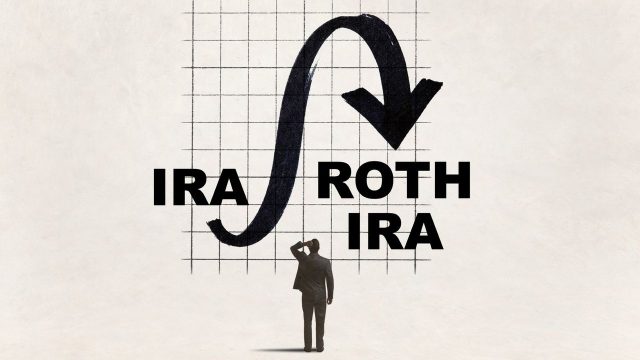
Even if you have already chosen an account for retirement savings, that doesn’t necessarily mean you can’t change your mind about it later. In fact, this is not at all uncommon — and many people see meaningful benefits from making a switch further down the line.
One common swap that people make is converting their traditional IRA to a Roth IRA. With this move, retirees can skip paying taxes on their withdrawals, but they will need to pay taxes on the money contributed, as a Roth IRA is funded with after-tax funds as opposed to pre-tax funds like a traditional IRA.
To determine whether or not this tax trade-off makes sense, it is important to weigh both the benefits and the drawbacks that a Roth conversion can have.
Pro: You will enjoy tax-free growth and withdrawals.
Since you pay taxes up front with a Roth IRA, the money you put into it can grow tax-free, and later withdrawals are tax-free as well. That tax-free growth can make a big difference in your life — “if you let your investments grow over several decades, that could lead to tens of thousands of dollars in tax savings,” said Ramsey Solutions, a personal finance blog. Plus, if you expect to be in a higher tax bracket later than you are now, that could result in “significant tax savings down the line,” said Vanguard.
Con: Your tax bill could go up right now.
While you may see tax benefits later, you are likely to end up with a tax bill now. When you convert a traditional IRA or 401(k), “you’re recognizing that contribution as income, and you must pay taxes on it — the taxes you didn’t pay when it went into the traditional account with pre-tax dollars,” said Bankrate. Depending on the amount you convert, that could even push you into a higher tax bracket overall.
Pro: You will not have to take RMDs.
A Roth IRA does not mandate taking required minimum distributions (RMDs), which the IRS requires for other account types, such as traditional IRAs, once you hit a certain age. This means with a Roth IRA, “you get to decide how and when you take money out of your account in retirement after a Roth conversion,” said Ramsey Solutions. In the meantime, your funds can continue growing tax-free.
Con: You typically have to wait five years for withdrawals.
“If you’re under 59 ½, you can’t use your funds for five years after a traditional IRA to Roth conversion,” due to what is known as the five-year rule, said Kiplinger. If, for some reason, you need access to the funds sooner, you may get hit with a 10% early withdrawal penalty, depending on your age.
Pro: You can pass on accounts tax-free.
A Roth conversion can also serve as a valuable estate planning tool, as “your heirs could inherit those funds income tax-free,” unlike with a traditional IRA or 401(k), said Kiplinger. Further, “inherited Roth earnings continue to grow tax-free, meaning your heirs have more flexibility on when to withdraw.”
Con: Your eligibility for government programs could be impacted.
If you “participate in government health care programs or others that depend on your income, a conversion could affect your eligibility in those programs or their cost,” said Bankrate. This is why it’s crucial to be mindful of timing when making a Roth conversion. Otherwise, said Charles Schwab, it “could increase your Medicare premiums and the taxes you pay on Social Security benefits.”
By converting a traditional IRA to a Roth IRA, retirees can skip paying taxes on their withdrawals




